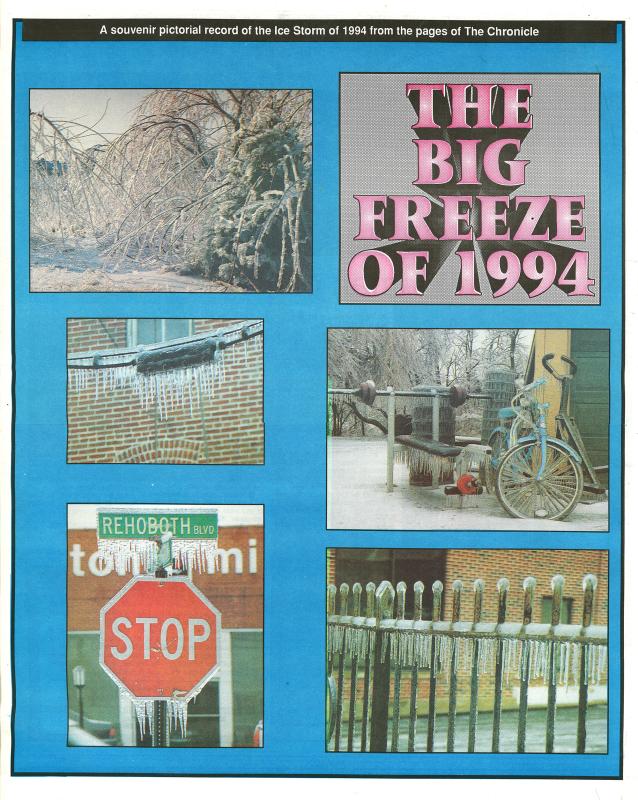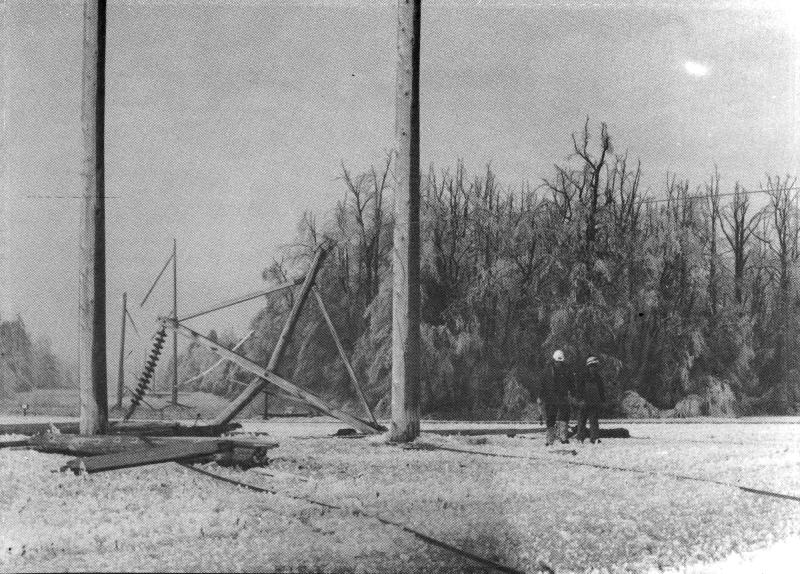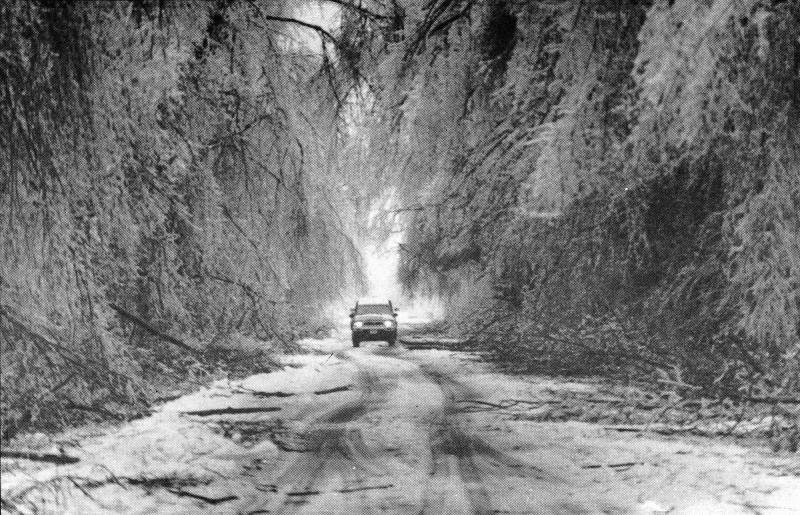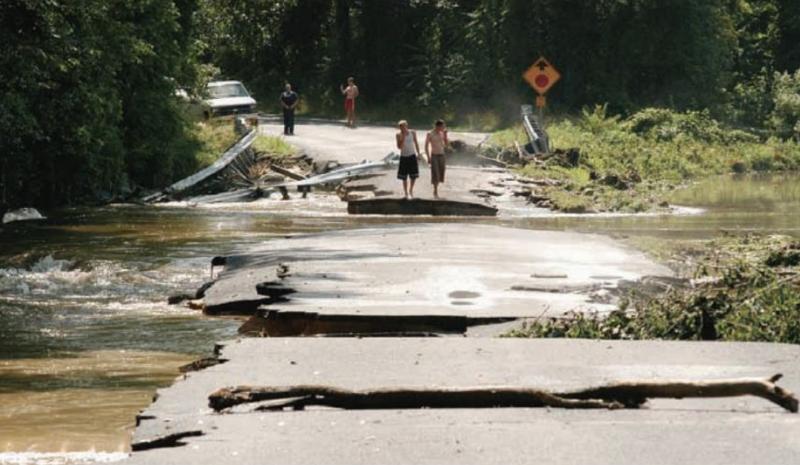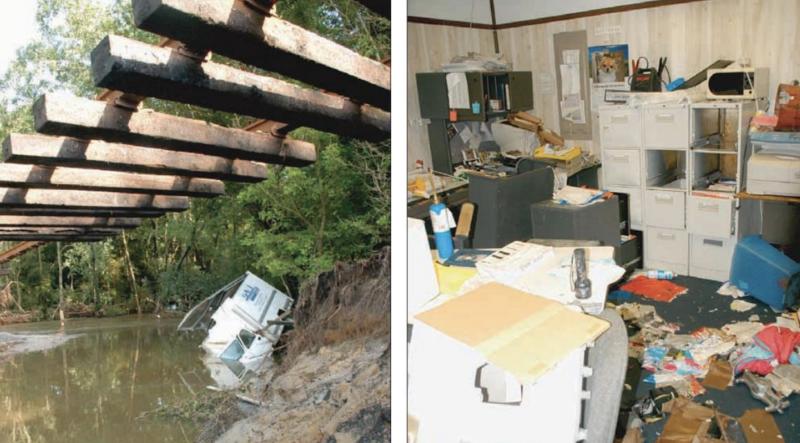Sussex storms are in my wheelhouse
Call me strange, but one of my favorite photography assignments is extreme weather.
I guess I should have been a storm chaser, because I like to get out there in the middle of the fracas to take photos.
I’ve photographed dozens of nor’easters. I went for a bumpy plane ride following Superstorm Sandy to take photos of the aftermath, including a closed Indian River Inlet bridge and breaches at Prime Hook National Wildlife Refuge, which resulted in the destruction of thousands of acres of marshland. And we’ve had two tornadoes in the past five years: April 15, 2019, in Laurel, and April 1, 2023, cutting a 14-mile path from rural Bridgeville to Ellendale.
Sprinkle in a few snowstorms and coastal flooding events, and I’ve been out there fighting the elements for five decades.
There are three extreme weather situations over the past five decades that really stick out in my mind – a blizzard, a flood and a freak ice storm.
I was only 7 years old when the Storm of ’62 ravaged the coast, so I can’t count that one. I can remember going to Rehoboth Beach to see the damage. My dad took some great home movies.
Unprecedented ice storm
I was editor of the Milford Chronicle when the ice storm hit Feb. 8, 1994. It started out as rain, which soon turned to ice overnight. Everything was coated with inches of ice. Trees and utility poles fell all over the place.
Living in Seaford, I had a hard time getting to Milford. Large trees and poles had closed Route 36, so I had travel down Route 13 and go cross county on back roads dodging downed trees and power lines.
People were without electricity for days. Since our office didn’t have electricity, we packed up what we needed and took over the conference room at The Leader in Seaford.
We missed one edition but were able to publish a paper Feb. 16, which was sold out. Cape Gazette editor Jen Ellingsworth was working at the Chronicle during this time period.
We published a special section with photos and stories. It’s one of the projects I’m most proud of.
At the height of the storm, 40,000 Delaware Electric Cooperative customers lost electricity. It took crews working 12- to 16-hour days and help from nearby utility companies to restore all power in 10 days.
Some people in rural areas were without power for two weeks. You could hear what sounded like gunshots when trees and branches cracked under the weight of the ice.
DEC lost 500 power poles and nine substations totaling $2 million to $3 million. At the time, it took four hours to replace a pole, meaning it took 2,000 hours to replace all of them, the equivalent of 50 normal work weeks. It was a Herculean effort under trying conditions to restore power.
The ice storm cut a path across Sussex County, affecting areas in and around Milton, Lincoln, rural Georgetown, Houston, Seaford and Bridgeville, Greenwood and Ellendale. The epicenter was Milford.
Residents without power had to either endure, stay at a Red Cross shelter, go to a motel or stay with friends. People with generators were the smart ones.
Twin blizzards in 2010
During the winter of 2010, twin blizzards hit Sussex County. I use the word twin with another meaning as well. My twin grandkids Colby and Jenna were born in Christiana Hospital in the middle of the storms Feb. 11.
We were able to get to the hospital on Route 13, which had one lane in each direction with 10- to 20-foot snow drifts creating a tunnel-like effect.
The main storm, known as Snowmageddon, hit the area Feb. 5-7, with record snowfalls, cold temperatures and high winds (a gust of 61 mph was recorded in Lewes).
One to two inches of snow fell per hour during the significant nor’easter, and several Sussex cities and towns reported snowfalls exceeding 20 inches.
Flood in Seaford
I was living in Lewes and received a call from my daughter, Beth, in Seaford June 25, 2006, who said, “Dad, you better get over here.”
Flood waters had devastated sections of the city, damaging homes and businesses, and closing roads.
You don’t really think of the Seaford area as prone to flooding, but with 13 inches of rain, bad things start to happen.
It was an ordeal getting into the city as the main routes were cut off by washouts and downed trees. I ended up going on a flooded Route 404 near Bridgeville to reach Route 13 to head south.
I spent the day trying to get to places, but with flooded streets, it was difficult. Wading through water was the order of the day.
The crazy thing is that as night approached, I realized I hadn’t checked on a house I owned in Seaford. Sure enough, the basement was flooded with over a foot of water.
I spent the next few days pumping out the water and drying things out.
Probably the worst storm – other than the Storm of ’62 – to hit this area was the Blizzard of 1888. Up to 60 inches of wind-driven snow fell along the East Coast starting March 12. Towns in Sussex County were isolated for days.
But that’s a subject for another column.
